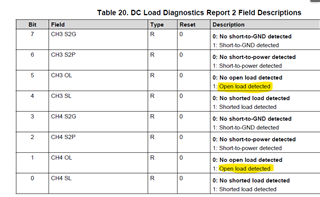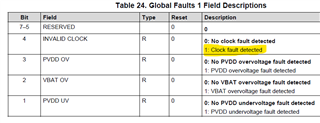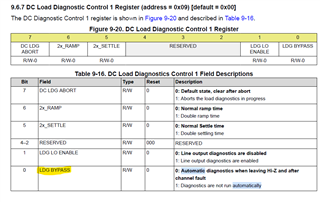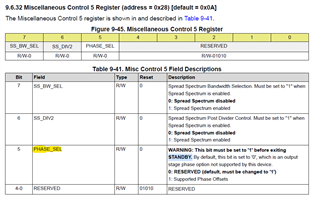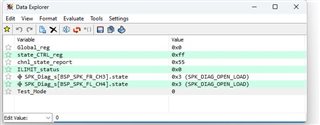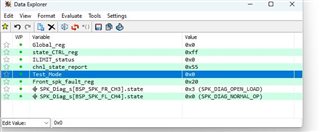Other Parts Discussed in Thread: TAS6424, TAS6424E-Q1, TAS6584-Q1
Tool/software:
Hello TI Support Team,
We are interested in reading the DC Load Diagnostic for Registers 0x0C and 0x0D. When we connect an external load, such as a speaker, to Channels 1, 2, 3, and 4 for both front and rear speakers, a Short to Battery, Ground, and Open DC Load are detected without issue.
Once we connect the DC load (external speakers), we expect the register values from 0x0C and 0x0D to be 0x00, as there is no fault across all channels. This is the observation we are currently seeing.
However, when we remove the external speakers, the fault should reset, resulting in a non-zero value, specifically with the 1st and 5th bits set. Unfortunately, the fault is not resetting as expected.
Could you please advise if there are any other configurations or registers we should consider adjusting in our Init() function to resolve this issue?
